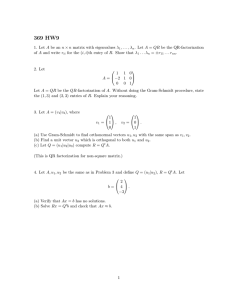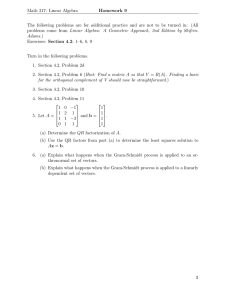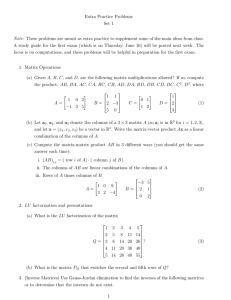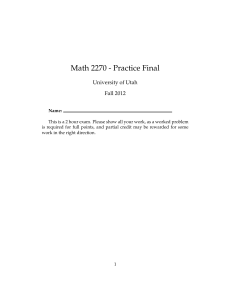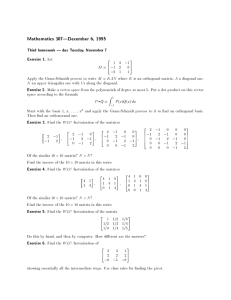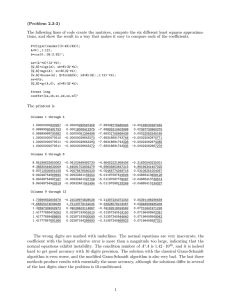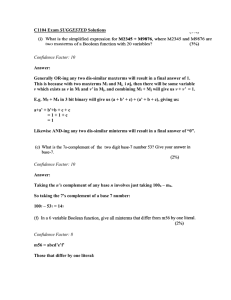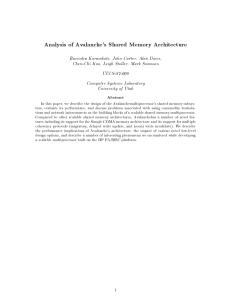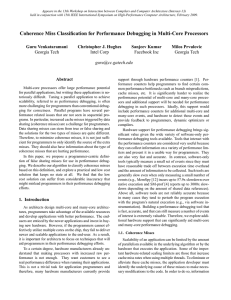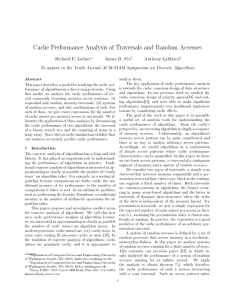18.335 Mid-term Exam (Fall 2009)
advertisement
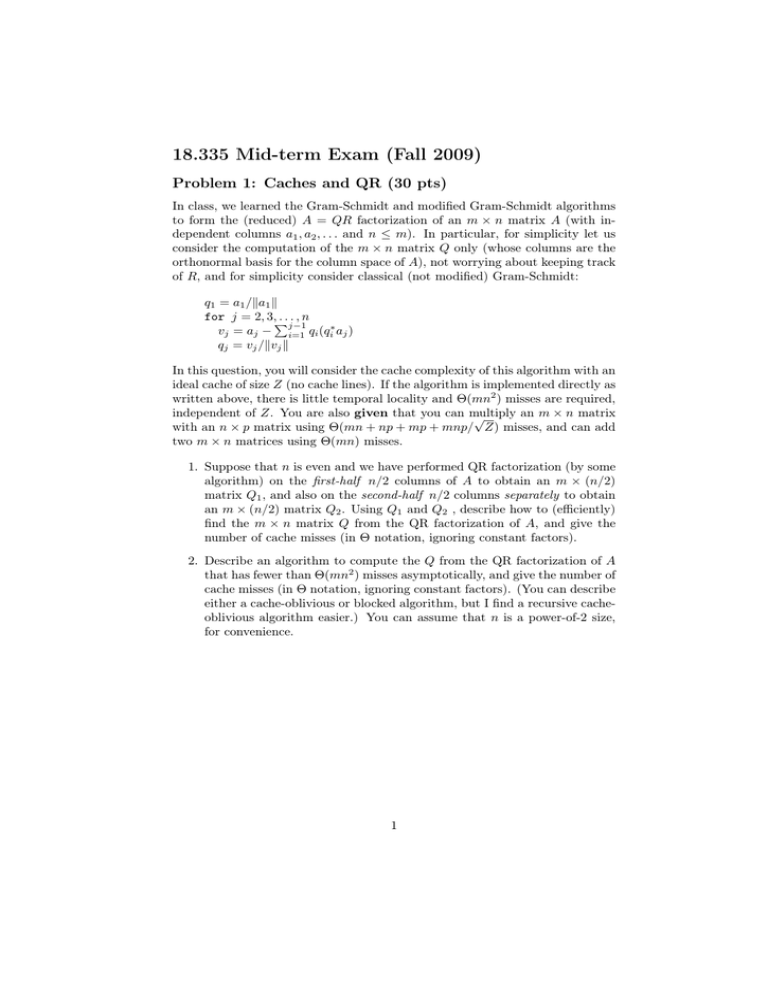
18.335 Mid-term Exam (Fall 2009) Problem 1: Caches and QR (30 pts) In class, we learned the Gram-Schmidt and modified Gram-Schmidt algorithms to form the (reduced) A = QR factorization of an m × n matrix A (with in­ dependent columns a1 , a2 , . . . and n ≤ m). In particular, for simplicity let us consider the computation of the m × n matrix Q only (whose columns are the orthonormal basis for the column space of A), not worrying about keeping track of R, and for simplicity consider classical (not modified) Gram-Schmidt: q1 = a1 /�a1 � for j = 2, 3,� ...,n j−1 vj = aj − i=1 qi (qi∗ aj ) qj = vj /�vj � In this question, you will consider the cache complexity of this algorithm with an ideal cache of size Z (no cache lines). If the algorithm is implemented directly as written above, there is little temporal locality and Θ(mn2 ) misses are required, independent of Z. You are also given that you can multiply an m × n matrix √ with an n × p matrix using Θ(mn + np + mp + mnp/ Z) misses, and can add two m × n matrices using Θ(mn) misses. 1. Suppose that n is even and we have performed QR factorization (by some algorithm) on the first-half n/2 columns of A to obtain an m × (n/2) matrix Q1 , and also on the second-half n/2 columns separately to obtain an m × (n/2) matrix Q2 . Using Q1 and Q2 , describe how to (efficiently) find the m × n matrix Q from the QR factorization of A, and give the number of cache misses (in Θ notation, ignoring constant factors). 2. Describe an algorithm to compute the Q from the QR factorization of A that has fewer than Θ(mn2 ) misses asymptotically, and give the number of cache misses (in Θ notation, ignoring constant factors). (You can describe either a cache-oblivious or blocked algorithm, but I find a recursive cache­ oblivious algorithm easier.) You can assume that n is a power-of-2 size, for convenience. 1 Problem 2: Lanczos (30 pts) Let A be a Hermitian m × m matrix with eigenvalues λ1 , λ2 , · · · , λm and cor­ responding orthonormal eigenvectors q̂1 , q̂2 , . . . , q̂m . Consider the Lanczos algo­ rithm applied to A: β0 = 0, q0 = 0, b = arbitrary, q1 = b/�b� for n = 1, 2, 3, . . . v = Aqn αn = qnT v v ← v − βn−1 qn−1 − αn qn βn = �v� qn+1 = v/βn gives a unitary ⎞ matrix Q = (q1 q2 · · · qm ) and a β1 ⎟ α2 β2 ⎟ .. ⎟ such that AQ = QT . . ⎟ β2 α3 ⎠ . . . . . . Suppose that the initial b is orthogonal to one of the eigenvectors q̂i corre­ sponding to a simple (not repeated) eigenvalue λi . Explain why the Lanczos process must break down (βn = 0 for some n) if it is carried out in exact arith­ metic (no rounding), and the Tn matrix (the n × n upper-left corner of T ) at the n-th step (where breakdown occurs) cannot have an eigenvalue λi . After m steps, recall that ⎛ this α1 ⎜ β1 ⎜ tridiagonal matrix T = ⎜ ⎜ ⎝ Problem 3: Backwards stability (30 pts) Let A be any invertible m×m matrix and b be any vector in Cn , and consider the function f (A, b) = A−1 b: that is, the function returning the solution to Ax = b. Now, consider the analogous function f˜(A, b) implemented in floating-point arithmetic by a backwards-stable algorithm, e.g. Gaussian elimination with partial pivoting, or Householder QR factorization. That is, if we let f (A, b) = x (the solution: x is the output in this case) and f˜(A, b) − f (A, b) = δx (the rounding error in the solution), then there is some δA and δb where (A+δA)(x+ δx) = b + δb and δA and δb are .... (yadda yadda...you should know the precise definition by now). Show that if f˜(A, b) is backwards stable with respect to the inputs A and b, then it must be backwards stable with respect to A alone. That is, find a small δA� = �A�O(εmachine ) such that (A + δA� )(x + δx) = b. (Hint: if you need to construct a matrix to turn one vector into another, you can always use a unitary rotation followed by a rescaling. And, of course, you can pick any convenient norm that you want, by the equivalence of norms.) 2 MIT OpenCourseWare http://ocw.mit.edu 18.335J / 6.337J Introduction to Numerical Methods Fall 2010 For information about citing these materials or our Terms of Use, visit: http://ocw.mit.edu/terms.
